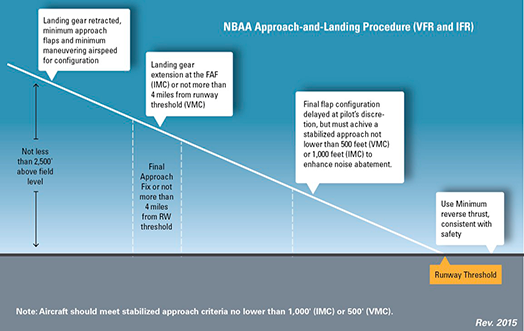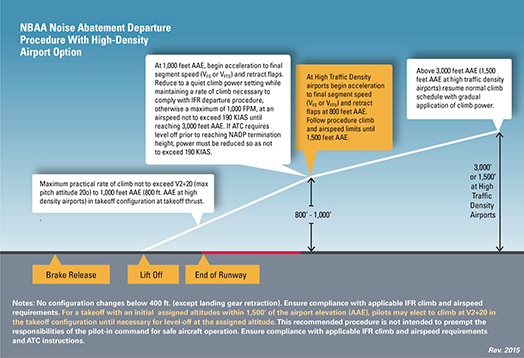Bob Hope Airport
Burbank, California, United States
Noise Abatement Information - Last update 09/18/2019
Overview
Addressing the impact of aircraft noise has been an ever present and high priority at Hollywood Burbank Airport since the Airport Authority purchased the Airport from Lockheed in 1978.
To further comply with the state noise regulations and all other applicable laws and agreements, the Airport Authority established and enforces the Noise Rules to the extent that such requirements shall not conflict with the pilot’s judgment of safety of flight.
Curfews
The Airport Authority established a voluntary curfew with the airlines, which have voluntarily agreed to not schedule any flights between the hours of 10:00 p.m. and 6:59 a.m.
The Noise & Environmental office reviews airline schedules and night-time performance of the airlines operating at the Airport.
Departures
Departure Only
Runway 08 departures prohibited for multiengine aircraft over 12,500 pounds.
Pattern Altitudes
ALL VALUES ARE MSL (FEET)
Not published
Intersection Takeoffs
Aircraft Categories: A, B, C, D & E
Between the hours of 10:00 p.m. and 7:00 a.m. (local time) daily, intersection take-offs are prohibited. First time violation is $1,555 and subsequent violations are $2,258 each.
APU Use
GPU or 400 Hz. gate ground power (where available) is encouraged at all times.
Engine Runup
Between the hours of 10:00 p.m. and 7:00 a.m. (local time) daily, maintenance engine run-ups are prohibited. The fine for a first-time violation is $1,555 and subsequent violations are $2,258 each.
Flight Training
Between the hours of 10:00 p.m. and 7:00 a.m. (local time) daily, practice approaches, training operations, and touch and go landings are prohibited. The fine for a first-time violation is $1,555 and subsequent violations are $2,258 each.
Stage II
Stage III
Some restrictions apply, please refer to the “Restricted Aircraft” section.
Flight Track Monitoring
YES
Noise Ordinance
> Rule 3.
All other (GA) jet operators shall use the National Business Aircraft Association’s noise abatement procedures.
For Gulfstream aircraft use the manufacturer Quiet Flying Procedures.
> Rule 8.
Between the hours of 10:00 p.m. and 7:00 a.m. (local time) daily, the following activities are prohibited:
Intersection takeoffs
Maintenance run-ups
Flight training operations
Practice approaches
Touch and go landings
The fine for a first-time violation is $1,388 and subsequent violations are $2,017 each.
> Rule 9.
A Except as provided in Parts B and C hereof, no aircraft may land at or take off from the Burbank-Glendale-Pasadena Airport between the hours of 10:00 p.m. and 7:00 a.m.
B The following aircraft shall be permitted to land at and take off from the Burbank-Glendale-Pasadena Airport between the hours of 10:00 p.m. and 7:00 a.m.:
1 Public aircraft, military aircraft, aircraft owned or operated by the armed forces of the United States, and aircraft operated in support of military operations.
2 Aircraft operated by commercial air carriers whose schedules comply with Rule 7 of these Rules and Regulations.
3 Aircraft, other than those listed in FAA Advisory Circular 36-1B or 36-2A, whose total rated maximum brake or shaft horsepower is 200 or less.
4 Propeller-driven aircraft whose certificated takeoff weights are 12,500 pounds or less and whose measured or estimated flyover noise levels, as contained in FAA Advisory Circular 36-1H or 36-2A (as said Advisory Circulars may be revised, supplemented, or replaced from time to time), are equal to or less than 85.6 dBA.
5 Aircraft whose estimated sideline noise levels, as set forth in FAA Advisory Circular 36-3 (or in any revision, supplement, or replacement thereof listing sideline noise levels), are equal to or less than:
a for aircraft whose noise levels have been determined at a sideline distance of 450 meters, 82.2 dBA;
b for aircraft whose noise levels have been determined at a sideline distance 0.25 nautical miles, 82 dBA; and
c for four-engine aircraft whose noise levels have been determined at a sideline distance of 0.35 nautical miles, 79.1 dBA.
6 Aircraft whose maximum noise levels, under normal operating conditions and procedures, have been determined by the Airport Authority, upon a showing by the aircraft manufacturer or operator, are equal to or less than either:
a when measured or estimated at a sideline distance of 450 meters, 0.25 nautical miles, or 0.35 nautical miles pursuant to F.A.R. Part 36 Appendix C, 82.2 dBA, 82 dBA, or 79.1 dBA, as applicable respectively, or
b when measured or estimated at a flyover altitude of 1,000 feet pursuant to F.A.R. Part 36 Appendix F, 85.6 dBA.
C Aircraft other than those specified in Paragraph (B) shall be permitted to land at or take off from the Burbank-Glendale-Pasadena Airport between the hours of 10:00 p.m. and 7:00 a.m. only under the following circumstances:
1 in the event such landing and/or takeoff results from the existence of a declared emergency;
2 in the event such landing and/or takeoff results from the use of the airport as a weather alternate; and
3 in the event such landing and/or takeoff results from a weather, mechanical, or air traffic control delay; provided however, that this exception shall not authorize any landing or takeoff between the hours of 11:00 p.m. and 7:00 a.m.
D Upon the request of the Airport Authority, the aircraft operator or pilot in command shall document or demonstrate the precise emergency conditions resulting in a landing and/or takeoff between the hours of 10:00 p.m. and 7:00 a.m. or the precise weather, mechanical, or air traffic control conditions resulting in a landing and/or takeoff between the hours of 10:00 p.m. and 11:00 p.m.
E Any aircraft operator or pilot in command violating the provisions of this Rule may, in the discretion of the Commission, and in addition to any other remedies (including injunctive remedies) available, be subject to civil penalties in the amount of Four Thousand Thirty-Six Dollars ($4,036) for each unauthorized landing and each unauthorized takeoff.
Noise Monitoring
YES
Restricted Aircraft (Night-time)
Rule 9 of the Noise Rules limits certain stage 2 and stage 3 aircraft from operating between the hours of 10:00 p. m. and 7:00 a.m. local.
Adam 500
BAe 748 A-B
Fokker F27
Boeing 727 all series
Boeing 737-200
Boeing 747 (stage 2)
Douglas DC-8
Douglas DC-9 (stage 2)
Douglas DC-10 (stage 2)
BAe SH125-400-600 series
Fokker F-28
Hawker Siddeley 748A
IAI 1121-1123 “commander”
Learjet 20 series
Lockheed 1011
Lockheed JetStar I
Rockwell Sabreliner 40-60 & 80 series
> The aircraft below are restricted by engine series or weight:
Dassault Falcon 10 & 20 without Garret TFE-731 engines or newer.
Hawker DH125-700 & 800 without Garret TFE-731 engines or newer.
Rockwell Sabreliner 265-65 & -75 without Garret TFE-731 engines.
Gulfstream G2 hush kitted is restricted to a max operating weight of 47,000 lbs.
Gulfstream G3 is restricted to a max operating weight of 55,500 lbs.
+ Must use Gulfstream Quiet Flying Procedures.
Airport Contact Info
| Name: | Maggie Martinez, Noise & Environmental Compliance Manager |
|---|---|
| Phone: | 818-840-8830 |
| Noise Hotline: | 800-441-0409 |
| Email: | mmartinez@bur.org |
| Web Address: | http://hollywoodburbankairport.com |
| Noise Complaint Address: | https://webtrak.emsbk.com/bur1 |
| Address: | 2627 N Hollywood Way Burbank, CA 91505 |
NBAA Procedures
AOPA Noise Awareness Steps
Following are some general guidelines and techniques to minimize the noise impact produced by aircraft operating near the ground.
1. If practical, avoid noise-sensitive areas such as residential areas, open-air assemblies (e.g. sporting events and concerts), and national park areas. Make every effort to fly at or above 2,000 feet over the surface of such areas when overflight cannot be avoided.
2. Consider using a reduced power setting if flight must be low because of cloud cover or overlying controlled airspace or when approaching the airport of destination. Propellers generate more noise than engines; flying with the lowest practical rpm setting will reduce the aircraft's noise level substantially.
3. Perform stalls, spins, and other practice maneuvers over uninhabited terrain.
4. Many airports have established specific noise abatement procedures. Familiarize yourself and comply with these procedures.
5. To contain aircraft noise within airport boundaries, avoid performing engine runups at the ends of runways near housing developments. Instead, select a location for engine runup closer to the center of the field.
6. On takeoff, gain altitude as quickly as possible without compromising safety. Begin takeoffs at the start of a runway, not at an intersection.
7. Retract the landing gear either as soon as a landing straight ahead on the runway can no longer be accomplished or as soon as the aircraft achieves a positive rate of climb. If practical, maintain best-angle-of-climb airspeed until reaching 50 feet or an altitude that provides clearance from terrain or obstacles. Then accelerate to best-rate-of-climb airspeed. If consistent with safety, make the first power reduction at 500 feet.
8. Fly a tight landing pattern to keep noise as close to the airport as possible. Practice descent to the runway at low power settings and with as few power changes as possible.
9. If a VASI or other visual approach guidance system is available, use it. These devices will indicate a safe glidepath and allow a smooth, quiet descent to the runway.
10. If possible, do not adjust the propeller control for flat pitch on the downwind leg; instead, wait until short final. This practice not only provides a quieter approach, but also reduces stress on the engine and propeller governor.
11. Avoid low-level, high-power approaches, which not only create high noise impacts, but also limit options in the event of engine failure.
12. Flying between 11 p.m. and 7 a.m. should be avoided whenever possible. (Most aircraft noise complaints are registered by residents whose sleep has been disturbed by noisy, low-flying aircraft.)
Note: These recommendations are general in nature; some may not be advisable for every aircraft in every situation. No noise reduction procedure should be allowed to compromise safety.
Temporary Information (None)
None
Mandatory Restrictions (None)
None
Images / Diagrams (None)
None
Arrivals (Not Specified)
Not specified
Preferential Runways (No Preference)
No preference
Preferential Instrument Procedures (None)
None
Reverse Thrust (No Restrictions)
No restrictions
Community Groups/Info (None)
None
Prior Permission (PPR) Operations (None)
None
Airport Maps
Airport Contact
| Name: | Maggie Martinez, Noise & Environmental Compliance Manager |
|---|---|
| Phone: | 818-840-8830 |
| Noise: | 800-441-0409 |
| Address: |
2627 N Hollywood Way Burbank, CA 91505 |
Weather Data

Loading Most Current Data...
Airport Data
| Elevation: | 777 ft |
|---|---|
| City: | Burbank, California, United States |
| Sectional Chart: | Los Angeles |
| Flight Service: | Hawthorne FSS |
| Control Tower: | Yes |
| Wind Indicator: | Yes |
| Fuel: | 100LLA, MOGAS |





